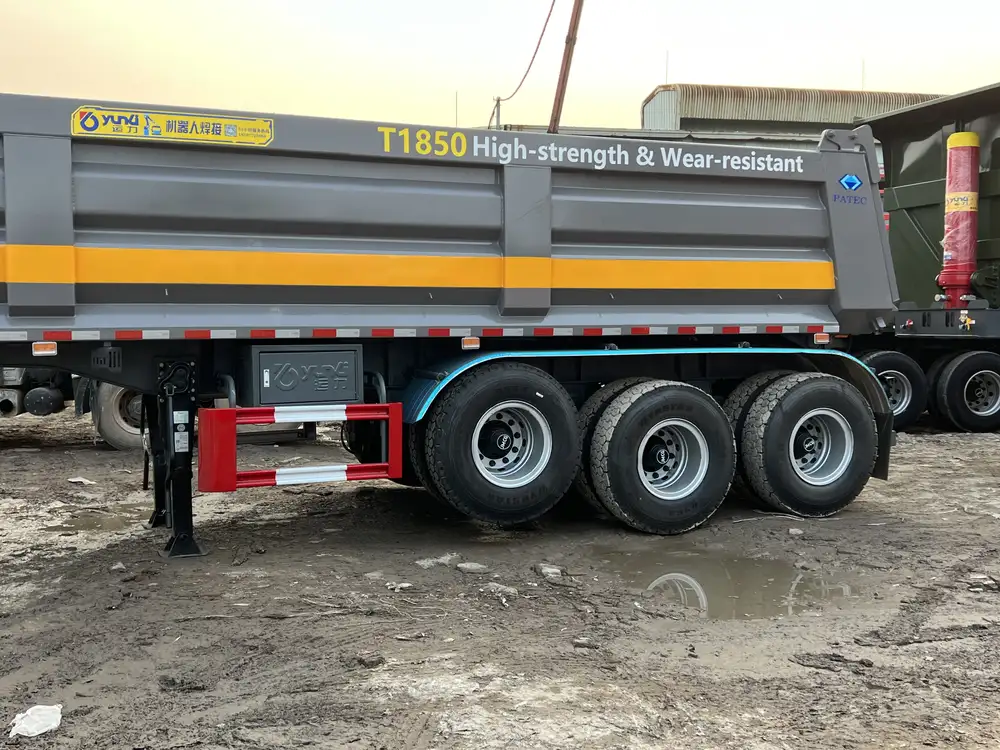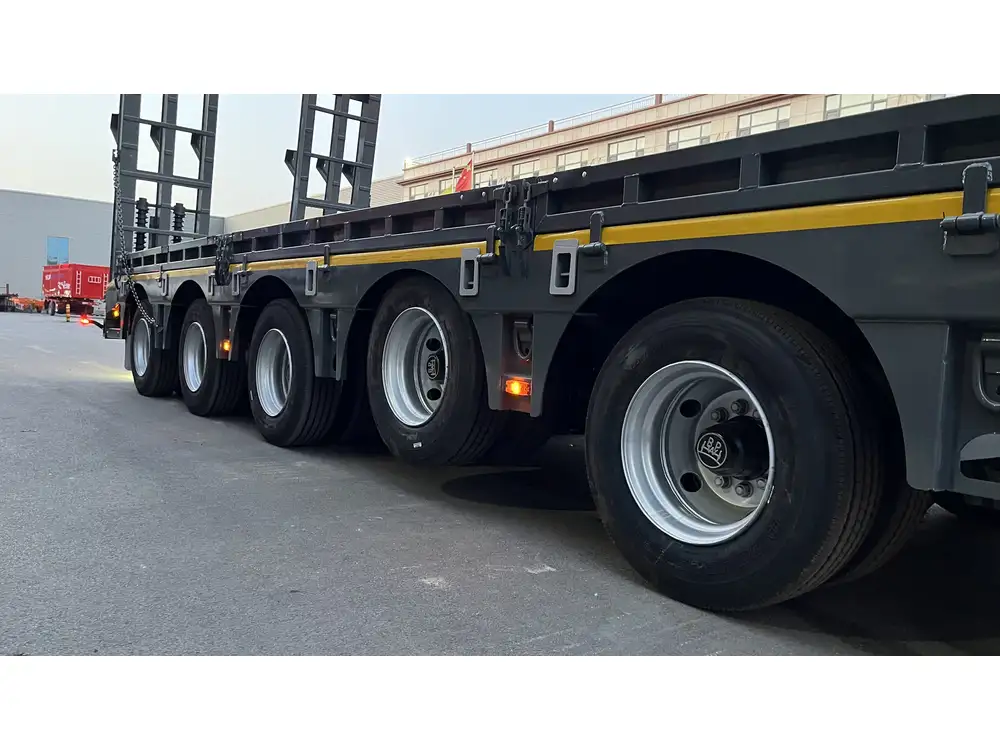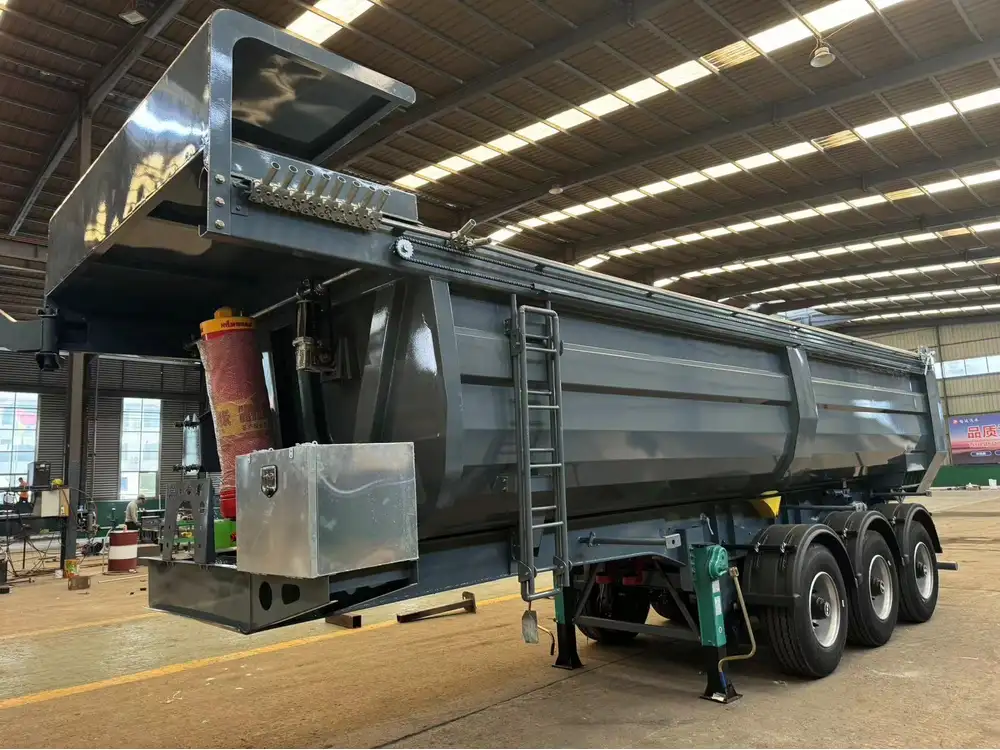Transitioning a mobile home into a flatbed trailer may seem like a straightforward endeavor, but in reality, it encompasses a multitude of considerations spanning legal, structural, and safety aspects. This process is not merely a physical transformation; it’s an intricate project that requires diligence, an understanding of regulations, and an acute awareness of the potential implications for both the structure itself and the environment in which it operates. Below, we delve deeply into the methodologies, pros, cons, and vital considerations involved in this transformative project.
Understanding the Basics: Mobile Homes vs. Flatbed Trailers
What is a Mobile Home?
A mobile home, often referred to as a manufactured home, is built in a factory and transported to its location. These homes are designed to be mobile but are generally placed on a permanent or semi-permanent foundation. They are subject to specific regulations and codes that govern their construction and use.

What is a Flatbed Trailer?
A flatbed trailer is a vehicular structure, typically mounted on wheels, designed for transporting goods that do not require an enclosed space. These trailers are versatile, widely used across various industries, and can carry oversized or irregularly shaped cargo, from construction equipment to freight containers.
Key Differences
| Feature | Mobile Home | Flatbed Trailer |
|---|---|---|
| Structure | Enclosed living space | Open, flat area |
| Mobility | Can be moved, but typically stationary | Designed for transport |
| Use | Residential dwelling | Freight transport and logistics |
| Regulations | Complex building codes | Often subject to vehicle weight and loading regulations |
Legal Considerations for Conversion
Before diving into the physical aspects of converting a mobile home into a flatbed trailer, it’s crucial to familiarize yourself with the legal landscape:

Zoning and Permits
Zoning Laws: Different regions have varying laws regarding the use of mobile homes and trailers. It’s essential to check your local zoning regulations to determine whether this conversion is permissible.
Permits: Obtain any necessary construction permits or vehicle registration approvals. Failure to comply can result in fines or legal repercussions.
Inspection Requirements: Depending on local laws, your converted unit may need to pass specific inspections to ensure it meets safety and structural regulations.
Assessing the Structure: Is Your Mobile Home Suitable?
Not all mobile homes can be successfully converted into flatbed trailers. The age, construction, and overall condition dramatically affect feasibility. Here are critical aspects to evaluate:
Frame Integrity
- Material Assessment: Most mobile homes are built using lightweight materials that may not withstand the rigors of a flatbed’s load and stress.
- Rust and Damage Check: Inspect the frame for signs of rust or damage. A compromised frame can render the conversion unsuitable.

Size and Weight
- Weight Considerations: Knowing the weight of your mobile home post-conversion is vital. A flatbed trailer must adhere to certain weight regulations to be roadworthy.
- Dimensions: Verify that your mobile home aligns with standard flatbed dimensions; oversized structures can encounter issues when transporting.
Design and Layout
- Floor Plan: Evaluate how interior walls can be removed to create a flatbed space without compromising structural integrity.
- Bedroom and Kitchen Areas: These features are typically permanent. Assess which parts can be eliminated or altered while maintaining balance in the trailer.
Step-by-Step Conversion Process

Step 1: Planning
- Blueprint Creation: Develop detailed blueprints or sketches illustrating your vision for the conversion. This will serve as your roadmap throughout the process.
Step 2: Dismantling
- Remove Non-Essentials: Strip away any non-essential components such as appliances, internal walls, and plumbing to reduce weight and prepare for a flatbed layout.
Step 3: Reinforcing the Frame
- Add Support Beams: Reinforce the existing frame with metal beams for additional strength, crucial for supporting loads when the home is in trailer form.

Step 4: Building the Flatbed
- Platform Construction: Create a flatbed platform using plywood or steel sheets, securing them onto the frame with bolts to ensure stability.
Step 5: Safety Features
Loading and Unloading Mechanisms: Depending on your needs, consider installing ramps or pulleys to facilitate the loading and unloading of goods.
Tie-Down Points: Integrate securing mechanisms to fasten cargo and prevent shifting during transit.
Step 6: Regulations Compliance
- Check Weight Distribution: The weight needs to be evenly distributed to prevent swaying or tipping while on the road.

Step 7: Registration and Title Update
- Vehicle Registration: After conversion, your mobile home will need to be registered as a trailer. This might entail a title change and adherence to specific vehicle regulations.
Pros and Cons of Converting a Mobile Home into a Flatbed Trailer
Advantages
- Cost-Effective: Utilizing an existing mobile home can be cheaper than purchasing a new flatbed trailer.
- Customization: Tailor the trailer according to personal or business needs, enhancing functionality.
- Recycling: Contributing to sustainability by repurposing a mobile home reduces waste.

Disadvantages
- Structural Limitations: Many mobile homes are not intended for heavy-duty transport, leading to potential risks.
- Time-Intensive: The conversion process can be lengthy, requiring meticulous planning and execution.
- Legal Obstacles: Navigating local regulations can be challenging and may result in extensive bureaucratic hurdles.
Potential Issues and Solutions
Structural Weaknesses
Issue: Mobile homes are lighter but may not withstand the stresses of transporting heavy loads.
Solution: Consider reinforcing the frame with high-quality steel or aluminum beams and use a professional engineer if needed.

Weight Limitations
Issue: Overloading can lead to accidents or vehicle malfunctions.
Solution: Always operate within the weight limits established by your local government and amend structures to optimize weight distribution.
Safety Standards
Issue: Failing to comply with safety standards can lead to legal issues or accidents.
Solution: Consult with the Department of Transportation (DOT) and follow their guidelines on trailer conversions.
Frequently Asked Questions

Can I Convert Any Mobile Home?
While many mobile homes can be converted, those built with lighter materials may not be suitable. Evaluate structural integrity before proceeding.
How Much Does It Cost to Convert?
Costs can vary widely based on materials and labor but typically range from $2,000 to $20,000. Draft a budget before starting your project.
Will Insurance Cover the Converted Flatbed?
Insurance typically varies between mobile homes and trailers. Consult your insurance provider to adjust your policy accordingly once the conversion is complete.

Conclusion: Navigating Your Conversion Journey
Converting a mobile home into a flatbed trailer involves multifaceted decisions, extensive planning, and commitment to adhering to legal requirements. With careful consideration, adept execution, and respect for safety regulations, this conversion can transform unused space into a versatile transport solution. By thoroughly evaluating the structure, gaining necessary permits, and following the step-by-step guide above, you can create a functional, compliant, and effective flatbed trailer from your existing mobile home, addressing both your transportation needs and your sustainability goals.
Additional Resources
- Local Zoning Offices: For information on local regulations
- Mobile Home Associations: For insights on structural assessments
- DIY Conversion Guides: To gather tips and tricks from others who have undergone similar projects
In summary, while the process can be daunting, the outcomes can be rewarding both financially and environmentally. Equip yourself with knowledge, adhere to regulations, and watch as your dream flatbed trailer comes to life.



